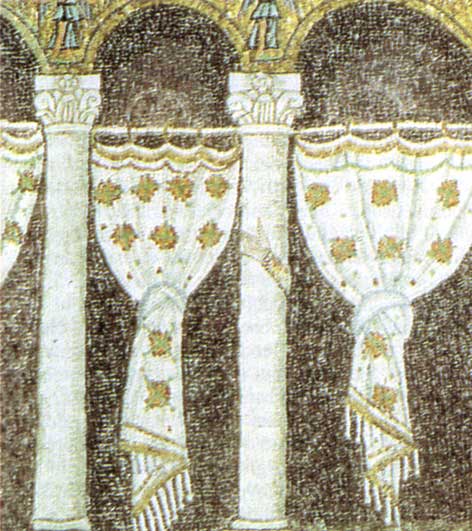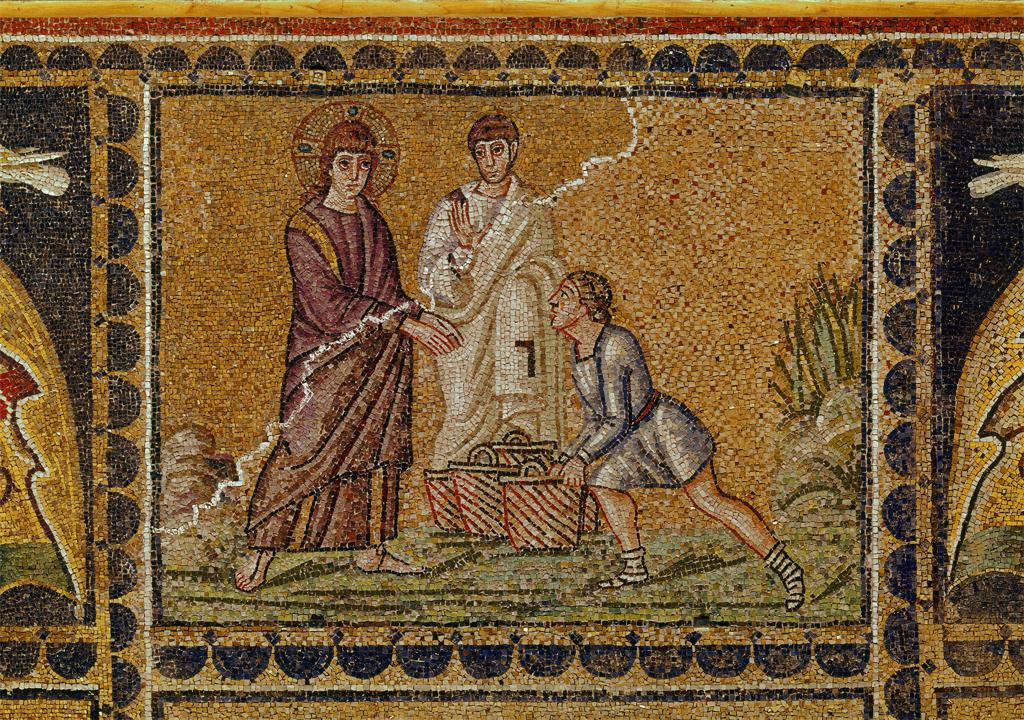The Basilica di Sant’Apollinare Nuovo is one of the six extant early Christian and medieval buildings in Ravenna famous for its luminous mosaic program. As it stands today, mosaics only fill the nave walls in the church. On the left side, female martyrs, holding their martyr crowns, walk toward the Virgin Mary Enthroned, positioned closest to the apse. On the right side, male martyrs mirror the women as they walk toward Christ. In the topmost section of both walls are scenes that narrate Christ’s life from The Wedding of Cana – on the left, nearest the apse – to The Doubting of Saint Thomas.
While the church as a whole is a product of centuries of renovations, the mosaics along the central nave walls – the martyrs processing toward Mary and Christ – were edited during, or closely after, their original construction in the late-fifth/early-sixth century when the church was being constructed as an Arian basilica. After the
Byzantines conquered the city of Ravenna, all heretical buildings were repurposed to align with Catholic doctrine. In response to iconographic details belonging to the Arian, and not Catholic, ideology, features from the mosaics were eliminated and others put in their places.
An example of this is the Palatium of Theodoric, who was the original patron of the Arian church. Placed on the right side of the nave, furthest from the apse and preceding the male martyrs, the facade details colonnaded arches running along the outside of the building. When the church was seized by the Catholics, the bishop replaced the figures placed in between the arches with veils. Interestingly, details of the no-longer extant individuals can still be seen against certain white columns.
Ravenna, City of Art. Edizioni Salbaroli – Ravenna.
Palatium of Theodoric, Basilica di Sant’Apollinare Nuovo, Mosaic, Sixth Century.
Basilica di Sant’Apollinare Nuovo, Nave View, Mosaic, Sixth Century.
Palatium of Theodoric, Hand detail, Basilica di Sant’Apollinare Nuovo, Mosaic, Sixth Century.
The Wedding at Cana, Basilica di Sant’Apollinare Nuovo, Mosaic, Sixth Century.
The Three Magi,Basilica di Sant’Apollinare Nuovo, Mosaic, Sixth Century.
Mary Enthroned, Basilica di Sant’Apollinare Nuovo, Mosaic, Sixth Century.






